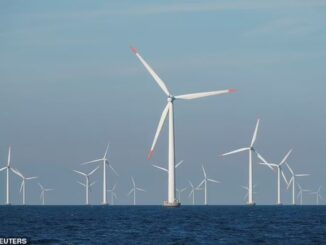
Aug 2 (Reuters) – U.S. subsidies for renewable energy producers more than doubled between 2016 and 2022, forming nearly half of all federal energy-related support in that period, a U.S. government report released on Tuesday showed.
Renewable subsidies jumped to $15.6 billion in fiscal year 2022 from $7.4 billion in fiscal year 2016, according to the Energy Information Administration’s Federal Financial Interventions and Subsidies in Energy report.
Most of those subsidies took the form of tax incentives in recent years, with solar applications making up the largest share of the subsidies due in part to rapid industry growth, the report showed.
That growth also helped solar overtake the share of biofuels, which was the largest beneficiary of tax incentives in 2016, the report said.
In 2021, funding for the Low Income Home Energy Assistance Program, which assists with energy bills and other energy-related costs, saw a one-time doubling to nearly $10 billion, after Congress approved additional funding for the program under its COVID-19 relief plan.
Meanwhile, subsidies related to natural gas and petroleum became a net cost to the U.S. government, which gave tax breaks worth $2.1 billion in fiscal year 2022 compared with a revenue inflow of $2.2 billion in fiscal years 2016 and 2017 combined.
These include provisions ranging from incentives for domestic production, write-offs and deductions tied to foreign production and income, and approved accounting methods that can reduce the stated taxable value of assets.
U.S. President Joe Biden proposed a budget in March that would scrap billions of dollars in oil and gas industry subsidies, reviving a perennial debate about whether fossil fuel companies should be receiving lucrative tax breaks.
“Reducing the subsidies fossil fuel stakeholders receive can help correct inefficient economic interventions into energy markets, save billions of taxpayer dollars, and reduce negative social and environmental impacts,” a 2019 analysis by the Environmental and Energy Study Institute found.


